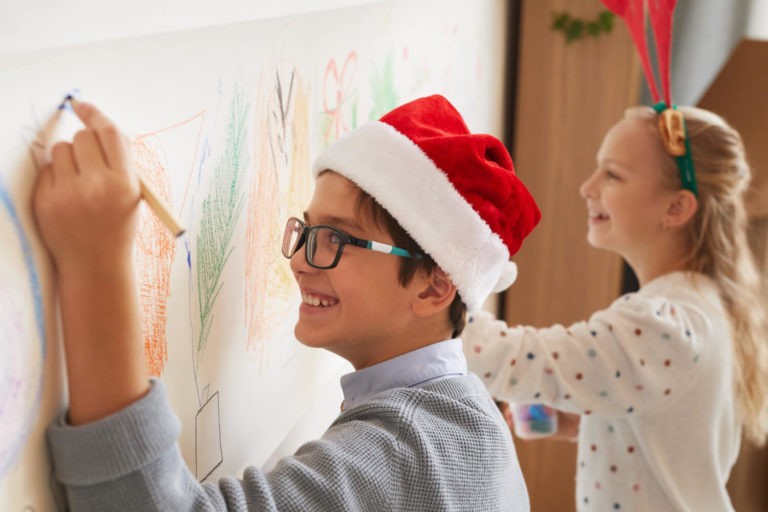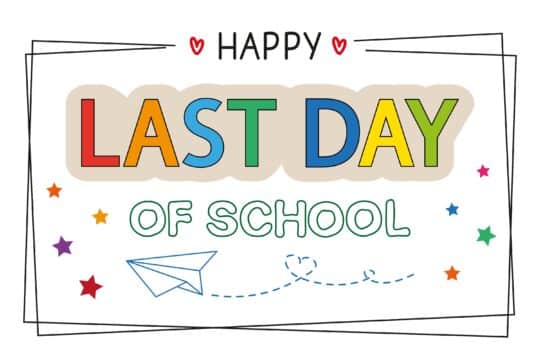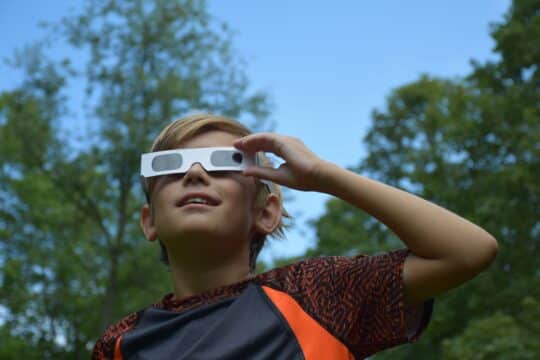December is full of special holidays to celebrate. Whether you observe Christmas, Kwanzaa, Hanukkah, or all of them, it is a reason to come together even when you are apart. Celebrations are usually built into the academic calendar and you’re probably wondering how distance learning will affect your holiday celebrations this year. Let’s face it, the holidays are going to be a challenge, but with a little forethought and redirecting our focus to happy holiday memories and traditions, we can all get through these tough times together.
Ways to Celebrate
Thankfully, the advances in technology make it possible to celebrate the holidays with those we cannot see in person. So, whether your students are hybrid or completely remote, they will still be able to be part of the classroom festivities. Here are a few ways to celebrate.
Hanukkah
Hanukkah is the first holiday observed in the month of December and is a Jewish holiday that is celebrated for eight days with a nightly menorah lighting, special prayers, and food. While every household may not observe this holiday, it’s important to teach children a variety of different ways their peers celebrate the holidays.
The most classic Hanukkah game is called the spinning of the dreidel. Challenge students to learn how to play with this dreidel printable where students can watch a video as well as printout directions on how to make their own dreidel. Challenge older students to take this activity a step further and research what the four dreidel letters in Hebrew on the sides of the dreidel stand for and what they have to do with Hanukkah.
Winter Solstice
For hundreds of years many people believed that the changing of the seasons was controlled by divinities known as sun Gods. The Winter Solstice – the day winter begins — was another day people would honor their Gods with rituals and festivals. Today, students can learn that the first day of winter is more than just the shortest day and longest night of the year, they can learn about how the celebration began and if the traditions are still followed today. They can learn how animals adapt to the changing weather or study the almanac of solstices. Students can study how the earth moves around the sun, then make a graph using local weather predications. Lastly, students can learn the scientific explanation of the Winter Solstice from the Windows to the Universe website.
Christmas
Christmas is celebrated every year on December 25th in remembrance of the birth of Jesus Christ. However, today we associate more than just remembering Jesus, we think of Santa Claus, presents, spending time with family, trimming the tree, reindeer, baking cookies, and so much more.
Whether you’re celebrating Christmas virtually or having a socially distant holiday with your students, there are still so many ways you can celebrate. For example, you can have a holiday scavenger hunt either in person or virtually. Students can search for Christmas-related items in the classroom or in their homes.
Another fun activity is to have students play Pictionary. For students who are virtual, have them take turns holding up a whiteboard or piece of paper and their classmates try and guess holiday-related drawings.
Lastly, have students explore their own Christmas history and traditions by researching what their families have done for generations (as well as how they’ve changed over time) and create an online presentation to share with their classmates.
Kwanzaa
Kwanzaa is an African-American celebration of life that celebrates African heritage and culture and was developed in the 1960s so African-Americans can have their own special day in December. Kwanzaa is a Swahili word that means “first” and signifies the first fruits of the harvest. Kwanzaa’s seven days of celebration last from December 26th to January 1st and focuses on seven principles: unity, self-determination, collective work and responsibility, cooperative economics, purpose, creativity, and faith.
To help students develop a deeper understanding of Kwanzaa as well as African-American culture, use these seven days to teach students about the seven principles and the history of the holiday. Each day choose a new principle to teach students about. At the end of the seven days, have students create their own list of seven personal goals for the upcoming year.
New Year’s
New Year’s has been celebrated since the ancient times, and while your students will be home for the New Year, it doesn’t mean that you can’t celebrate it with them in school before or after the day.
Take your students on a worldwide tour of traditional New Year’s customs by having them research how different countries celebrate the occasion. For example, the Japanese ring a bell 108 times on New Year’s Eve because they believe people have 108 problems; while people from the Bahamas dress up in colorful costumes and march in a parade called the “Junkanoo”.
Use this list of New Years traditions from cultures around the world to assign students a specific country to research. Younger students can create a flap book, while older students can create an infographic – a display of information in an easy-to-understand format — of the information learned. Venngage is a great site to use for that. What’s great about this New Year’s activity is that it can be modified for any age or grade as well as for students in the classroom, hybrid, or remotely learning.
It’s easy to get overwhelmed during the holidays, and the last thing that you want to do is to project those feelings onto your students. Try and savior the season and have your students partake in fun holiday activities that educate them on a variety of traditions that are celebrated across the globe.




